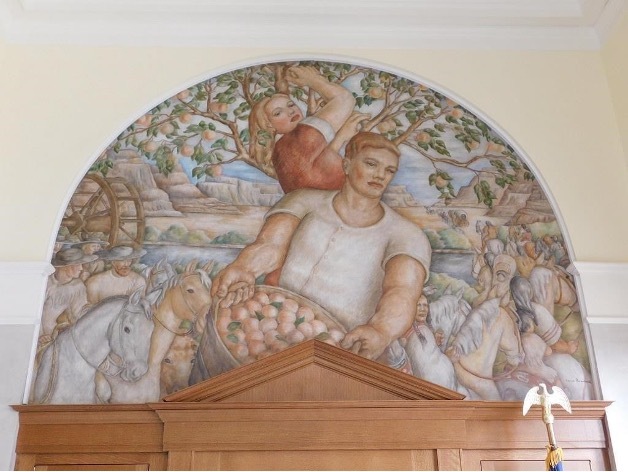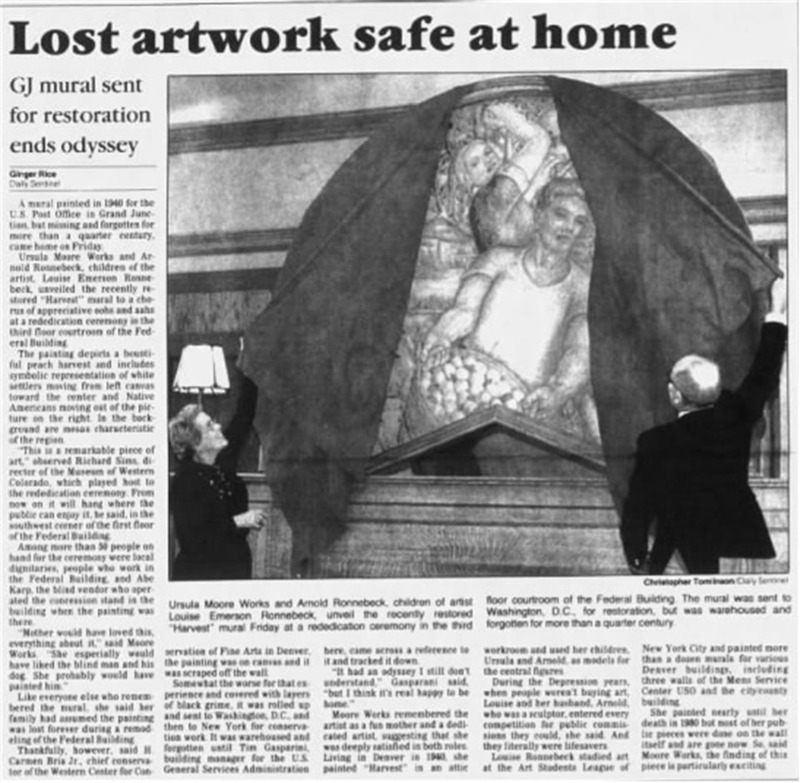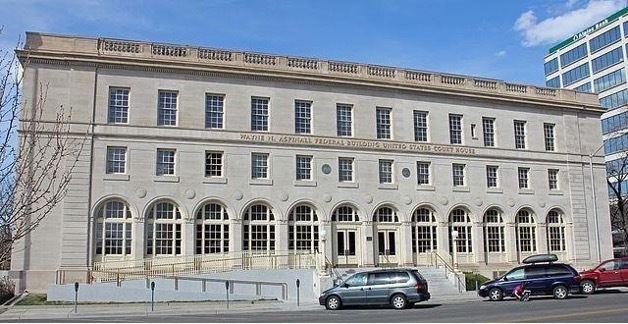
Louise Emerson Ronnebeck’s The Harvest, completed in 1940, is representative of the Regionalist-style Treasury Section of Fine Arts-funded work with its depiction of a storied local industry and a significant regional history.
Louise Emerson Ronnebeck’s The Harvest is a Regionalist-style mural found in James A. Wetmore’s 1918-designed Wayne N. Aspinall Federal Building United States Courthouse in Grand Junction, Colorado. Completed in 1940 under the Treasury Section of Fine Arts, the mural hangs in the building’s post office today.
Art programs like the The Treasury Section of Fine Arts (TSFA) allowed for greater opportunities for women artists to work. In the typical process of creating TSFA murals, Ronnebeck, a prominent artist during the New Deal era, won the opportunity to paint The Harvest through an anonymous contest after she submitted a sample sketch. In 1940, when leading architect Louis A. Simon expanded the Wayne N. Aspinall Federal Building, Ronnebeck installed The Harvest to adorn the postmaster’s office door pediment with its distinct V-shaped bottom.
Ronnebeck’s work prominently represents the history of the Ute people’s forced removal from Colorado throughout the nineteenth century. Before the 1860s, Ute people had lived in southwest Colorado for centuries and had established seasonal hunting grounds in the area. They also faced minimal encroachment from European and American settlers prior to the 1860s, until mineral interest drew more into the area. The United States government desired to increase land possession in the region. As such, they forced all seven Ute bands into a single reservation. Still, settlers intruded into reservation boundaries seeking minerals, further increasing hostility between the groups. Events like the Meeker Incident, in which a Ute group killed Agent Nathan Meeker, ten men, and took five others hostage, represented the hostility’s heights. The event culminated in an us-or-them sentiment. Settlers refused to leave, and by 1881, efforts to force the last Ute bands away from Colorado succeeded, with Southern Utes remaining within a sparse boundary.
As six million acres once inhabited by the Utes became available for settlement, the Mesa County region attracted settlers who established local industries like orcharding, depicted through The Harvest’s Regionalist-style. Indeed, peaches make up more than seventy-five percent of Colorado’s fruit production today. Festivals such as 1909’s Peach Day display the fruit’s significant settler history in the area, dating back to the development of irrigation systems in the Grand Valley during the late 1800s and early 1900s. Numerous peach orchard establishments led to the Mesa area’s status as a highly concentrated peach district.
The Harvest depicts a couple in the foreground harvesting a peach crop. On the couple’s sides, Ronnebeck represents episodes of western settler and Native history. On the left, settlers move into the area with their horses. On the right, Ute people leave as settlers force them out into the painting’s background featuring Grand Junction’s mesas. As such, The Harvest is characteristic of New Deal-era TSFA murals. Most of them did not choose to focus on the Great Depression or generalized art focusing on universal features. Instead, paintings like The Harvest chose to focus on thriving local industries and impactful regional histories.
Images


